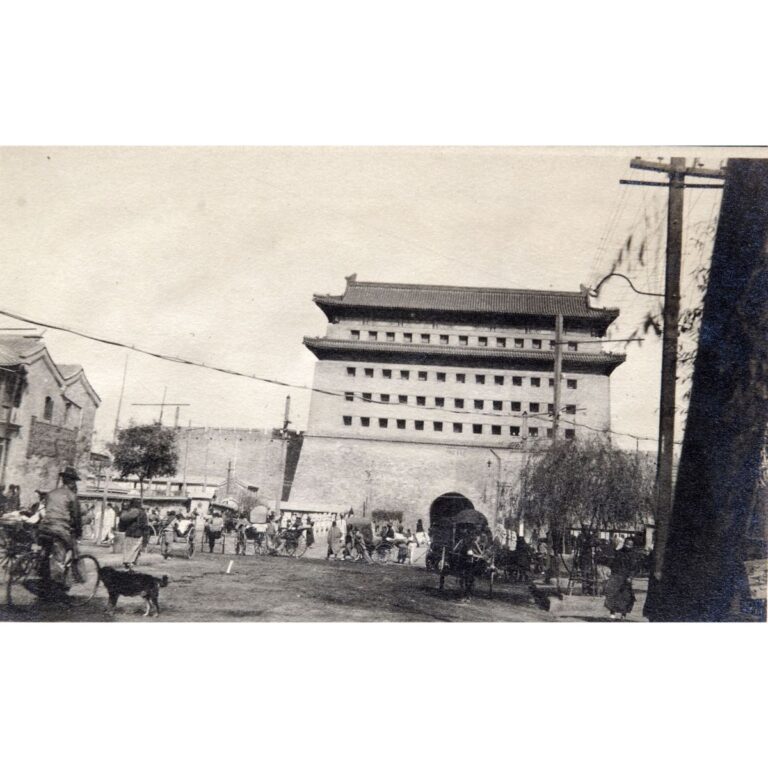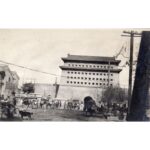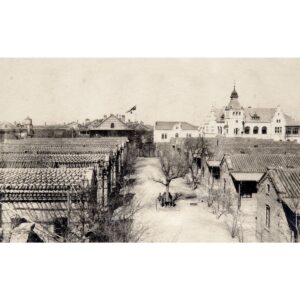Photography Fort at the Front Gate
A black-and-white photograph showing the fortress or guardhouse above Zhengyang Gate (Zhengyangmen 正陽門), better known as the Front Gate (Qianmen 前門). The fortress on the city wall is built of bricks. In front of it, we see the hustle and bustle of the city with a variety of rickshaws, kowoodars, and passers-by.
Imperial Beijing consisted of three main parts separated by walls from each other and from the areas outside the city. The Outer City (Waicheng 外城) was located in the southern part of the city. In the north stood the Inner City (Neicheng 内城), which enclosed the third part, the famous Forbidden City (Gugong 故宫 or Zijincheng 紫禁城). The central gate between the outer and inner quarters was the Zhengyang Gate (Zhengyangmen 正陽門), better known as the Front Gate (Qianmen 前門).
The photograph is the 100th of 449 photographs of Beijing and its surroundings in the album of Ivan Skušek Jr., purchased during his stay in Beijing (1914–1920). ... more
A black-and-white photograph showing the fortress or guardhouse above Zhengyang Gate (Zhengyangmen 正陽門), better known as the Front Gate (Qianmen 前門). The fortress on the city wall is built of bricks. In front of it, we see the hustle and bustle of the city with a variety of rickshaws, kowoodars, and passers-by.
Imperial Beijing consisted of three main parts separated by walls from each other and from the areas outside the city. The Outer City (Waicheng 外城) was located in the southern part of the city. In the north stood the Inner City (Neicheng 内城), which enclosed the third part, the famous Forbidden City (Gugong 故宫 or Zijincheng 紫禁城). The central gate between the outer and inner quarters was the Zhengyang Gate (Zhengyangmen 正陽門), better known as the Front Gate (Qianmen 前門).
The photograph is the 100th of 449 photographs of Beijing and its surroundings in the album of Ivan Skušek Jr., purchased during his stay in Beijing (1914–1920). In the handwritten inventory of the album, the photograph is referred to as Castell des Tsien-Men. (DZ, MV)



































Do you have a comment or additional information about the subject?